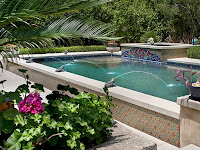Ways of Dealing with Old Pool Water When You Can't Drain Your Swimming Pool
I sat down with Terry Arko at HASA to talk about how the drought affects a swimming pool, mainly the rise in TDS (Total Dissolved Solids), and what you can do as a pool pro and a pool owner about this issue.
Terry Arko has over 40 years of experience in the pool, spa, and hot tub industry, working in service, repair, retail sales, chemical manufacturing, and product development. He is a CPO instructor through the National Swimming Pool Foundation. He also serves as an instructor for the Pool Chemistry Training Institute to certify residential pool techs. Terry is an active member of the Association of Pool and Spa Professionals Recreational Water Quality Committee.
I think it is best to start with a definition of TDS.
TDS: Total Dissolved Solids are basically everything in the water besides the water itself. The “junk” includes chlorides, metals, ions like bicarbonate and carbonate alkalinity, nitrogen compounds, and organics that are left in the water after it evaporates even after fresh fill water is added.
TDS can become an issue if the levels are high in your pool. Basically, if the water is acting strange, algae blooming with high chlorine levels, murky water, etc., it could be high TDS. You can take a sample to your local pool store and have it tested.
The best way to lower the TDS is a drought environment with a partial drain of the pool whenever you get the opportunity. Dilution is the key here. So if you can dilute an inch to 3-4 inches each month that would be ideal.
For a pool service company, a TDS meter is a good investment. I like the Lamotte PockeTester & the HACH Testers as they also do the Salinity level as well as TDS. To get the TDS reading first test a sample of the pool’s fill water. Then test the pool water. Subtract the pool TDS from the fill water TDS to get the actual TDS number.
Example:
Tap Water (fill water) 500 TDS
Pool water 1700 TDS
1700-500 = 1200 which is the actual TDS.
TDS in a Salt Water Pool
TDS in your Salt Water pool is a little more complex. You will always get a really high number because of the salt level in the pool. I talked at length with Hach to see if there was some way to calculate the TDS with all the salt in the pool. I also talked to the salt system manufacturers but everyone agreed that the best method would be to get a TDS reading and subtract the Salinity (Salt level) from that number to get a ballpark. The only way to get a true reading in a sense is when the pool is newly filled with water and salt is added. If you get the TDS at that point you will have a good baseline so you will know if the TDS gets 2500 ppm over that number it is time to change the water in the salt pool. The maximum TDS in a salt pool is debatable but 5000 ppm is a good number to stay under.
Visit my Website: http://www.swimmingpoollearning.com/

Comments
Post a Comment